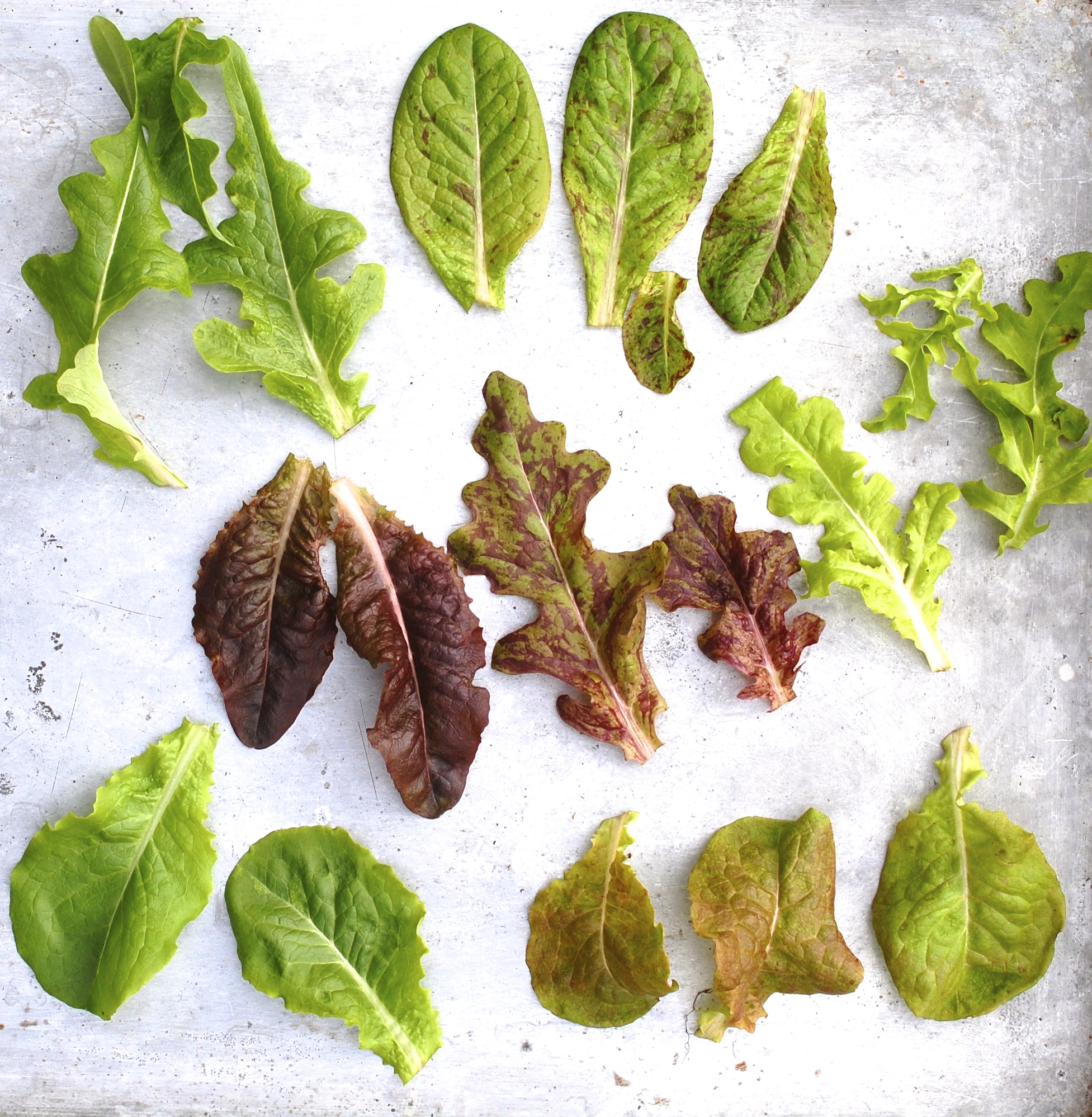This is true: If I could only grow one vegetable, it would be lettuce. Sure, there’s nothing like a warm, juicy strawberry or a sweet Sungold tomato straight from the garden. But can you pick a tomato in April or a strawberry in October? Nah. But you can grow lettuce practically all year round practically anywhere – in a pot, a planter, a garden bed, or even a flower bed.
But the main reasons I grow lettuce, like most cook-gardeners, are freshness and variety. Garden lettuces actually have flavors – ranging from sweet to citrusy to nutty – that grocery store lettuces have parted with long ago, having traveled for days to get to you. With literally hundreds of varieties of gorgeous lettuces to grow at home, grocery lettuces wind up rather homely in comparison. (Sorry, red leaf.)
Better still, by picking a little of this and a little of that from your lettuce patch, you can make your own custom lettuce “mix,” thereby avoiding the plastic-boxed mixes at the store that are often rotting by the time you get them home. Also, it’s nice to have a mix that’s just lettuce; as much as I like spicy greens, many of our farm stand customers prefer all-lettuce mixes for the milder flavors and loftier texture.
To make your own lettuce mix, you can harvest leaves from most lettuces before they mature. I grow all my lettuces as if they were “cut and come again” varieties even if they are heading lettuces (see varieties below). Once the outside leaves are about four inches tall, I begin harvesting them, leaving the inner leaves to keep growing. I pick from more than a dozen varieties when I make salad mix. Yes, this is labor intensive for a farm, but for a home gardener it’s ideal – you don’t have to wait for forty days to begin picking, and you’ll get multiple harvests from one head. Leave a few to mature, though, just to see how gorgeous they can be!
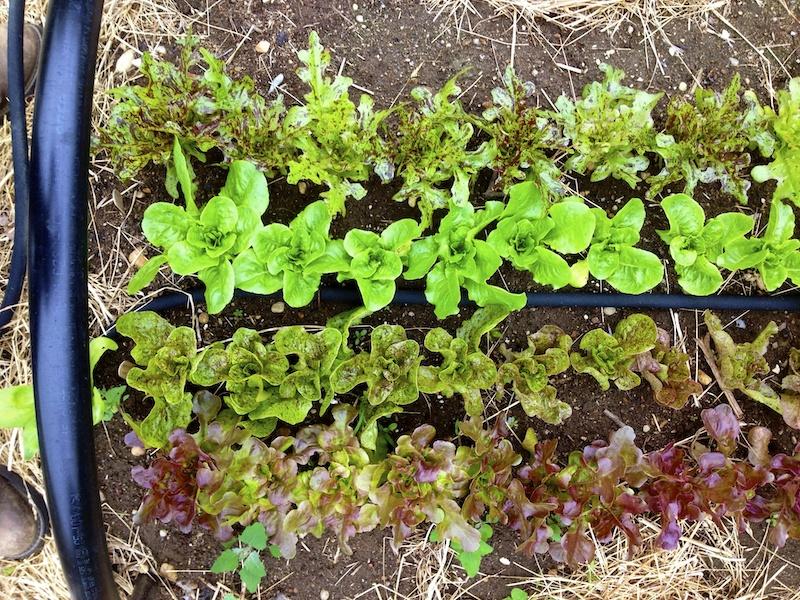
Use small scissors to harvest lettuce leaves. Submerge the leaves in a bowl of tepid (not cold) water; lift the lettuce out of the water with your fingers, leaving the dirt behind in the bottom of the bowl. If you want to crisp up your lettuce, you can then put it in very cold water for a short time. Store lettuce, spun-dry, in a zip-top bag lined with a paper towel and left partially open. It will last a good week in the fridge.
The easiest way to get homegrown lettuce is to buy six-packs of healthy seedlings from an Island nursery. This is a great way to go if you’re planting in a container or won’t have a lot of time to tend to young seedlings. If you’re a little more ambitious, you can direct sow seeds in rows in well-prepared soil in your (fenced) garden, preferably in an area that gets some afternoon shade. Begin sowing in early spring (when the soil warms to 45 degrees) and repeat sowings every few weeks. Thin the seedlings to six inches apart (or ten inches apart if you’ll be leaving the heads to mature). Keep the soil damp during germination and give the lettuce plenty of water and a layer of mulch to discourage weeds.
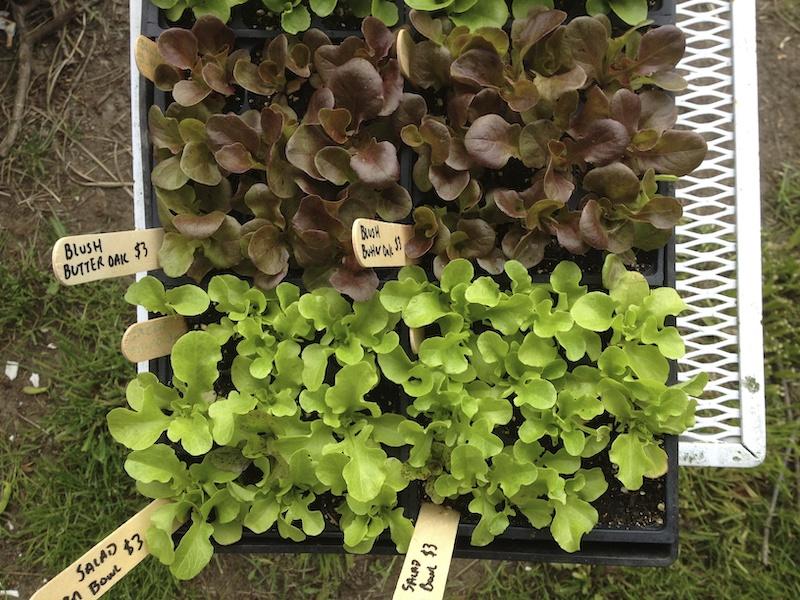
Once you get used to having your own fabulous lettuce around, you’ll want to have your own “house” vinaigrette on hand for salad every night. I’ve included one of my favorites here as a starting point for you.
Lettuce Varieties to Try
There are four main types of lettuce – loose-leaf, or cutting lettuce; bibbs and butterheads; romaine and cos types; crispheads (icebergs) and batavians.
LOOSELEAF varieties are the easiest to grow and harvest. Fast growing, dependable, and tasty, these are also some of the prettiest, frilliest lettuces, too.
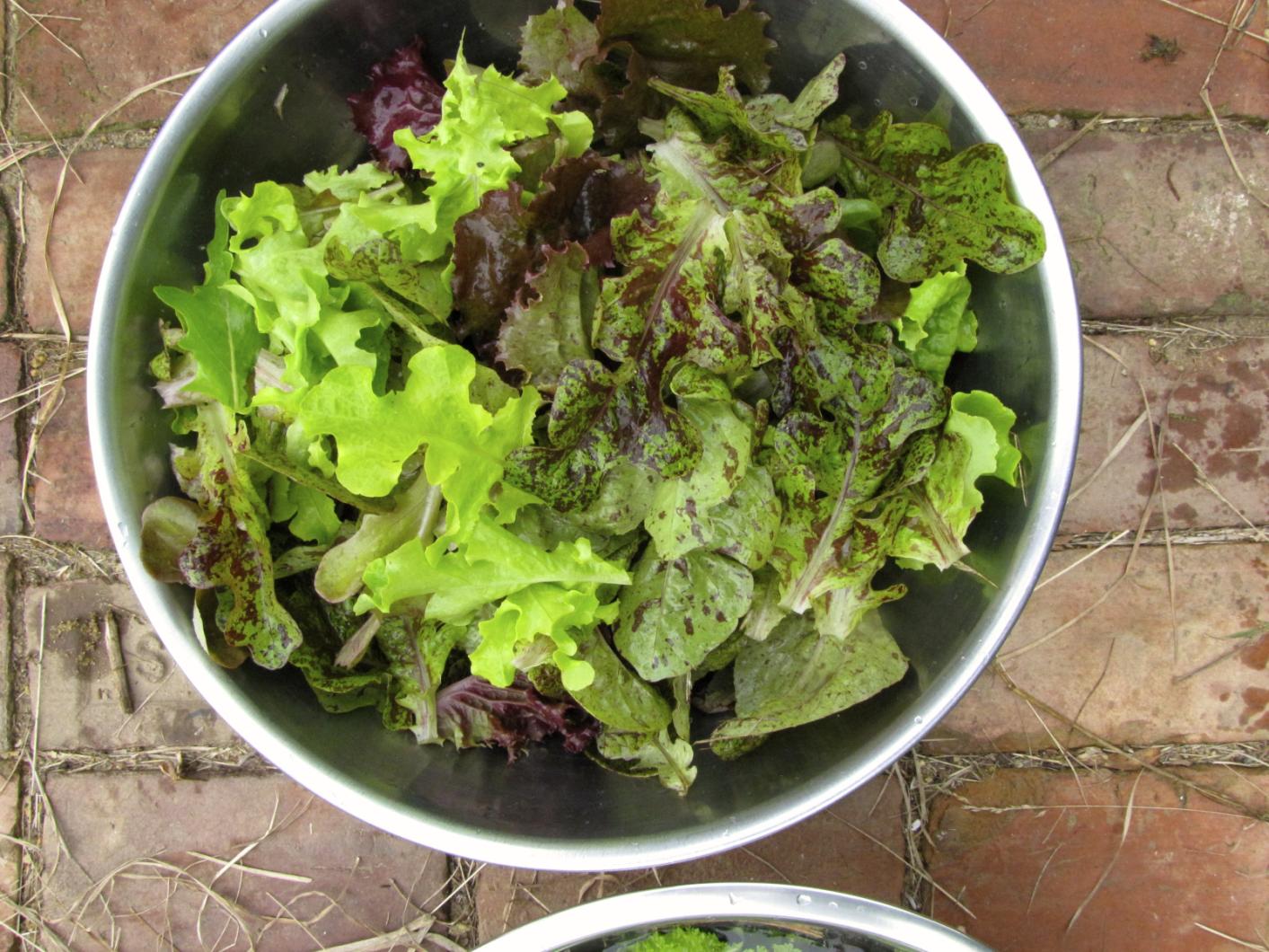
Favorite varieties: Salad Bowl and Red Salad Bowl, Royal Oakleaf, Flashy Green Butter Oak, Blushed Butter Oak, Red Sails.
BIBBS AND BUTTERHEADS are my favorite for flavor and texture. Their creamy, velvety, cup-shaped leaves are sweet and delicious and especially versatile in the kitchen.
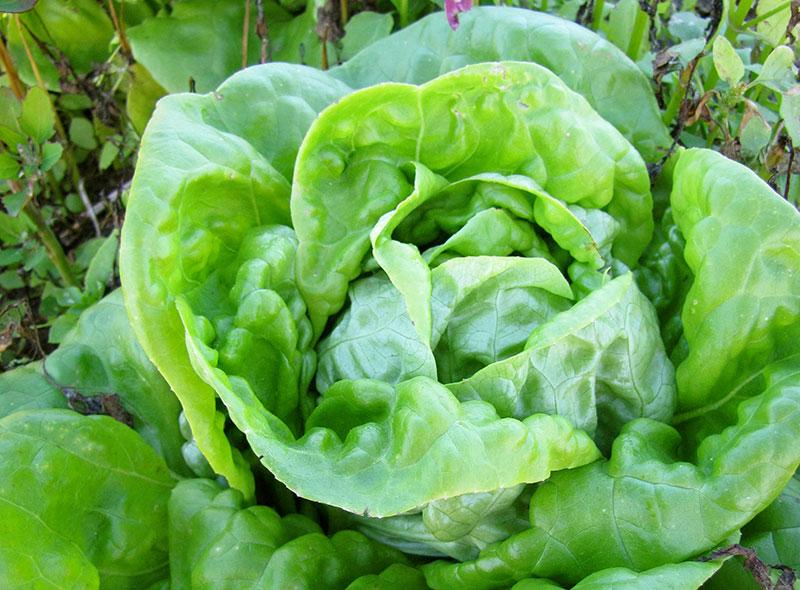
Favorite varieties: Buttercrunch Bibb, Pirat (a red-tinged lettuce descended from Merveille de Quatre Saisons), Red-Eared Butterheart, the highly productive Speckled Amish Bibb.
ROMAINE OR COS lettuces are sturdy, highly flavorful, handsome, and productive. Upward growth means easy harvesting. Romaines are higher in vitamins A and C than other lettuces.
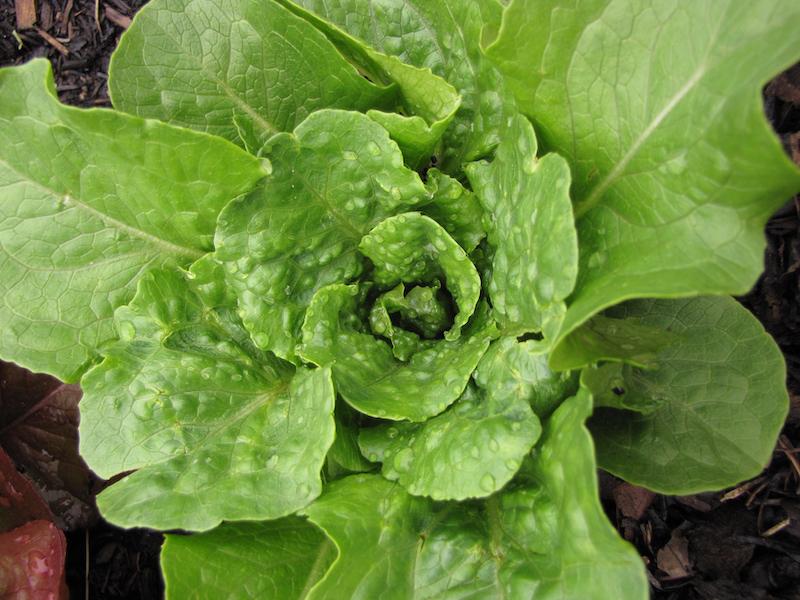
Favorite varieties: Forellenschluss (also known as Freckles or Trout Back), Blushed Butter Cos, Little Gem.
BATAVIAN OR CRISPHEAD lettuces form tight heads that can be harvested even in high summer. The seeds will germinate in hot weather too.
Favorite Varieties: Magenta, Nevada.
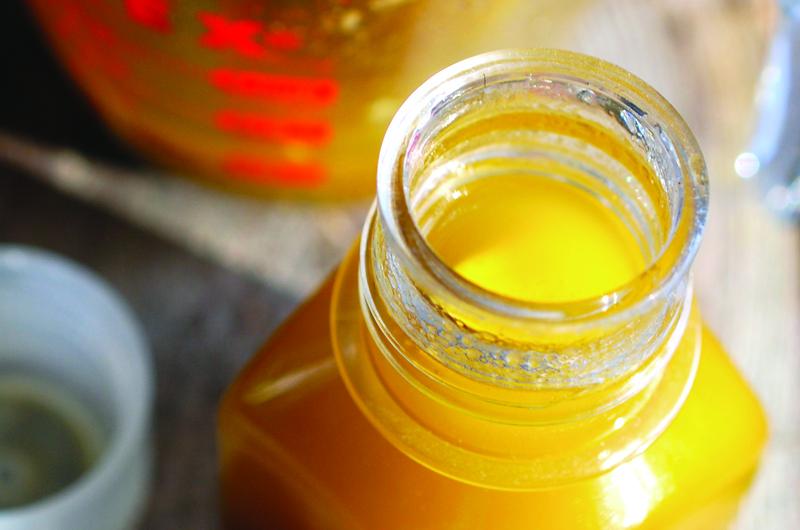
Farmhouse Vinaigrette
To honor your lovely lettuces, dress them lightly and don’t weigh them down with heavy extras. Finish with just a sprinkling of Martha’s Vineyard Sea Salt and a dusting of Parmigiano. For a twist, try serving the salad atop a big crostini, grilled or broiled and topped with a local cheese like the Grey Barn’s Eidolon or Mermaid Farm’s feta. Yields 1 cup, or enough for a lot of salads.
- 3/4 cup extra virgin olive oil
- 1/4 cup sherry vinegar
- 1 teaspoon lightly chopped fresh thyme leaves
- 1 teaspoon finely grated lemon zest (from about one large lemon)
- 1 teaspoon local honey
- 1/2 teaspoon Dijon mustard
- 1 garlic clove, peeled and cut in half
- 1/4 teaspoon Worcestershire sauce
- 1/4 teaspoon kosher salt
- Freshly ground black pepper
1. Put all the ingredients, including several grinds of fresh pepper, in a glass measuring cup and whisk vigorously until emulsified. Or combine everything in a glass jar with a lid and shake vigorously. Store the vinaigrette in the fridge for up to several weeks and bring to room temperature before using. Whisk or shake before serving.

